Travels with Grace: Heading Home, 1929
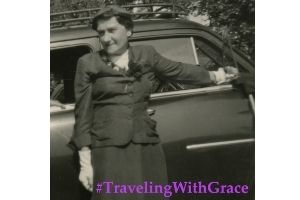
Welcome to the next segment of our 2019 #TravelTuesday series: Traveling with Grace, which covers the final leg of her 1929 European journey. To read more of Grace’s travels, click here.
September 22, 1929
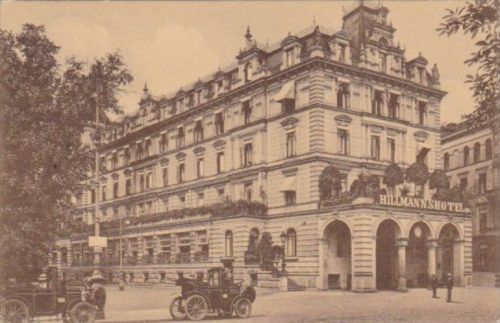
Sunday. We leave Hamburg at 11:30 a.m. It is very cool after the rain of the past two days. In an hour and a half we reach Bremen and Hillman’s hotel in time for lunch. This afternoon we take a carriage and Mr. Brafman rides with us around the city which is not as large as Hamburg, but the new suburban developments are beautiful, garden spots and so well kept. Also the older residences along the river Weser which look palatial. We ride through the pretty wooded Buerger park with its many artificial lakelets including the Emmasee on which swans disport themselves and note at least one unusual ornamental detail, an arbor trained in the form of a summer house with dome and windows cut into it.
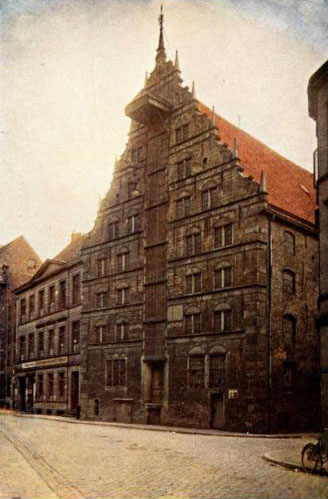
We end up at the Market Place, high spot of the city, surrounded by the Rat Haus, Ratskellar, elegant Dom with gold mosaic lunettes on the façade, Borse and the quaint old Gothic Schutling Haus, while in front of the Rathaus stands the statue of Roland, the giant who was Charlemagne’s paladin. Other interesting old buildings are the Essig Haus; the Stadtwaage or Town Scales, with curious gabled façade now used by a broadcasting company; and the Kornhaus, where they used to store up cereals against possible famines. There is a pretty bridge with towers over the Weser.
September 23, 1929
Monday. As it is cold and rainy this afternoon, we spend a couple of hours pleasantly viewing the Lichtspiel at the “Europa Palast” a thoroughly modern and large movie house where we occupy one of the comfortable [loges] at the rear. The decorations and lighting are very effective, in the rather severe modernistic style so popular over here. The feature film is “Der Gunstling von Schonbrunn” in addition to which two excellent comedies, a travelogue and news events are shown. There is a good orchestra.
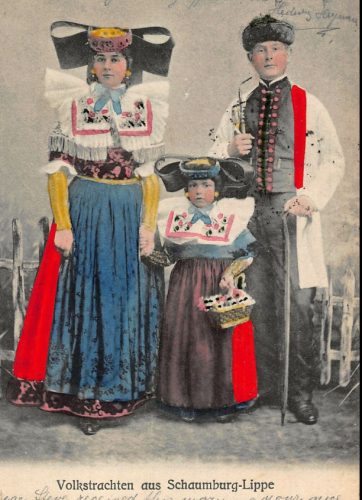
Later we go to a new and very nice restaurant “Die Glocke” for dinner. In the same building is a large ballroom and concert hall. On the street we see a woman in a very curious looking national costume and Mother, who is always the most intrepid of our party when it comes to asking questions, found out that she is from Schaunberg-Lippe. Later we go to the Astoria to see the cabaret which is only fair though the place is most attractive. It is open for dancing until 4 a.m.
September 24, 1929
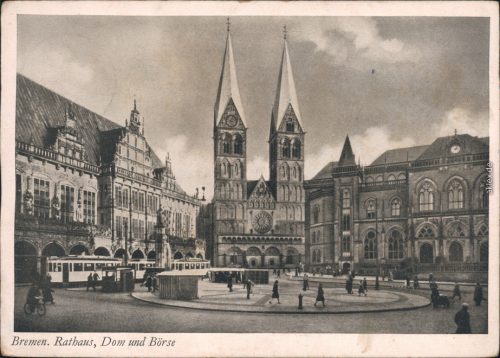
Tuesday. This morning we visit the cathedral (St. Petri Dom) which was begun in 1003. It is a very fine Gothic edifice with beautiful stained glass windows, bronze doors carved with scenes from the two testaments, arched portals, sculpture and a wonderful old stone fort with primitive carving dating from the 11th century. But the curiosity of the place is the Bleikellar, or Lead Cellar, which contains seven old coffins in each of which is displayed a mummified corpse, the oldest of which is said to be 460 years old. They are the color of leather, the teeth in some cases are well preserved and the fingernails also which look shiny. A cat, mummified in the same way, is also showed to the visitors. It looks and feels like leather. The supposition is that certain properties in the air and moisture in this place, probably containing radium, are responsible for these phenomena.
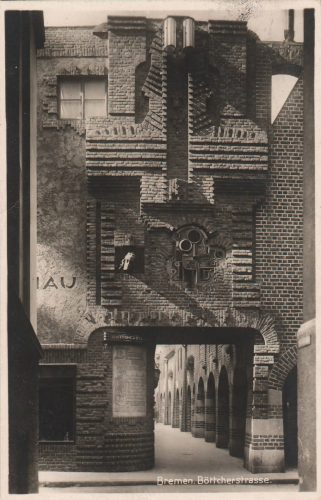
We then walk up the Boettcherstrasse, a small street which is a sort of art gallery where artists have given free rein to the their ultra-modern ideas and fancies in the design and decoration of the very odd buildings which house studios, workshops for various artificers, display rooms, gift shops, taverns, etc. all I the modern trend and quite original. The material used for the buildings, glazed tile, is seen in a variety of forms and colors, the portal over the entrance to the street is adorned with futuristic figures. There are several little courtyards, in one of which is the fountain of the Seven Lazy Men, that quaint legend which tells of the seven who hated work and therefore pave their street so that they need not trouble to dig their wagon if it got stuck in the mud; built a dyke so that they need not save themselves from a flood; planted trees before their house so that they would not have to walk to the woods for shade; dug for a spring in order to save the trouble of carrying water from the river; and in other ways improved their condition that they might enjoy themselves in laziness.
In another part of the street we visit the house of an artist which he charges the public an admission of one mark to see but it is well worth it. Here is a haven for lovers of the antique. There is a kitchen, lined in beautiful tiles from Delft, containing all sorts of ancient utensils in copper, pewter and brass. The open hearth is similarly furnished. The dining room walls are covered with finely painted and embossed leather, the furniture is Florentine, the ceiling cross beams carved and painted. A few rare paintings of old masters are hung up. There is a library in which are gather handsome oriental tapestries and rugs, beautiful silver urns and platters covered with the rich patina of age, a built-in cupboard of carved wood with old and original manuscripts, odd tables and chairs with costly upholsterings. The floors are finely inlaid and on the walls hand wrought brackets containing half burned candles. But there are also concealed electric lights in the ceiling for indirect lighting. An old escritoire is inlaid with squares of ivory etched. A little glass cabinet is filled with tiny doll furniture made of glass and porcelain. A beautiful winding staircase leads to the upper apartments.
We lunch at an old-fashioned tavern across the way and drink our beer out of old pewter mugs with covers on them. Afterwards we visit the demonstration rooms of the Hag Kaffee and later ride out to the factory in the suburbs of Bremen, Stellingen. Here a gentleman shows us through the plant explaining the process of extracting the caffeine from the raw coffee, the roasting, etc. We see a branch of the coffee plant with pretty white flowers and fruit which turns from green to bright red and them almost black. The coffee bean is in the seed which must be taken when the fruit is ripe. There is a greasy substance which must be extracted which hardens like gum. This forms a considerable waste and no use for it ahs yet been found. The caffeine however is refined and sold to drug manufacturers. In a large tiled room (the whole place is spotlessly clean) the visitors are seated at long marble-topped tables and young girls serve Hag coffee, cream, sugar and delicious cakes baked here. They also claim to make their own sugar.
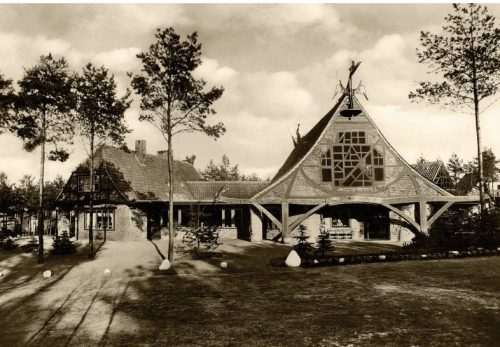
Then we take the taxi (it being a lovely afternoon) for a ride into the country to Worpswede, an artists’ colony where we see buildings similar to those in Boettchestrasse. Many of the products of the arts are sold here including hand-woven scarves, baskets, lampshades, rugs, pottery, jewelry, etc. There is a large gallery of pictures some of which are quite striking, portraits, still-lifes, and landscapes of the neighboring country which is very pretty. On a high hill in the vicinity the artists have erected a symbolic stone monument to fellow members fallen in the ar.
At the hotel tonight they have the formal opening of their new dining room, also decorated in the modern manner.
September 25, 1929
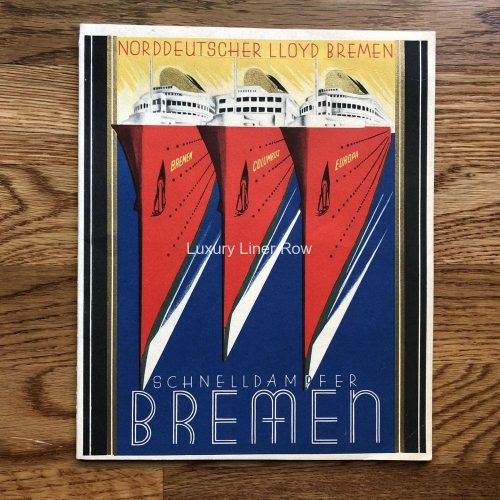
Wednesday. We leave Bremen at 2:05 p.m. on the special boat train, the best appointed one we have seen on this trip. The buildings of the Norddeutscher Lloyd in Bremen are very imposing. They also have a hospital at which emigrants are examined before embarking. The executive offices are housed in a handsome new building all marble, bronze and gold (shop models in a glass case). The ride to Bremerhaven takes us through pretty farm country and neat rural towns. They take me to the boat on a wheel chair, the seat of which is attached to shafts and is removed form the wheels. On this they carry me up the gangplank.
The “Bremen” is a revelation to us. The social hall in which the life of the ship centers is a long rectangular room, elegant in its simplicity. The lights are concealed in tubes of glass running horizontally around the ceiling. The walls are paneled in dark circassion walnut on which are appliqued cut out figures of brass. The wooden pillars are striped with brass which likewise marks the outlines of the wide windows hung with gray velvet to match the carpet and chair coverings. Chairs, tables and standing lamps are grouped about and above the doorway at each end of the room is a panel of etched wood unpolished. The library is lined with panels about three feet wide each bearing an extract of some well known composition in the following languages: Hebrew, Greek, Japanese, Chinese, Egyptian, Sanskrit, Turkish, French, German, English, Italian, Dutch, Hungarian, Czech, Swedish, Spanish, Russian, Norwegian, Danish, Polish (20 in all). In the corridors are shops displaying the most tempting and luxurious novelties of all kinds, a flower shop where all the exotic blooms are to be found. There are little fountains built into niches lined with mother-of-pearl, little colored lights playing in the basins. Pictures picked out in mosaics are set into the walls. On the walls of the dining saloon are plaster reliefs of hunting scenes. Also some fine tapestry. In one of the halls is the Market Place of Bremen done in tapestry. In the ballroom small brass bas-reliefs stand out on cream colored walls and table and chairs stand in little elevated loges which encircle the room. The swimming pool of colored marble is chastely plain. The gymnasium opens from it. There are two promenade decks, one entirely closed for the deck chairs, the other open and free of chairs permitting unrestricted exercise. The sun deck is over this. The palm room filled with lovely flowering plants is on the closed promenade. It opens from the bar and here drinks are also served. On the upper sun deck is the Ritz restaurant where meals are served a la carte, though it would be hard to improve on the main dining room. There is also a play room which nursery furniture, a train of cars and representatives from the zoo. And everywhere is the note of solidity and simplicity. Not one gaudy touch or bizarre detail but all distinctly modern and in neutral tones. Porcelain plaques denoting various sports, as for example swimming girl, golfing girl, tennis girl, etc. placed between the windows of the ballroom. On the walls of the children’s room are painted houses and the windows in them light up. There is a shooting gallery where one shoots at moving pictures of animals. Some bowling alleys, billiard rooms, etc. on the top deck. An aeroplane stands on a turn table from which it is catapulted several hours before the ship docks. Among the notables on board are Senator Copeland, Ty Cobb, the Maharajah of Kapurtala, Director Gatti-Cassarra of the Metropolitan Opera, Herr Stinnes, Mrs. And Mrs. Schurman, wife and daughter of the German Ambassador, Mr. and Mrs. Fritz Kreisler, Mr. Carl Laemmle.
September 25, 1929 (4 p.m.)
S.S. Bremen
North German Lloyd Line
We came aboard just in time for tea this afternoon. Concert after dinner followed by dancing.
September 26, 1929
Took passengers on from Southampton about noon today. Sail along in sight of land for several hours and about 7 p.m. passengers embark off Cherbourg. Much excitement in both places. The Schloss’s are on board and Mr. H. Bernheimer. Also some people we crossed with on the “Saturnia” and a couple we met on the “Roma” two years ago. Among the notables are the Fritz Kreislers, Gotti-Cassarra, the wife and daughter of Ambassador Schuerman and a young author of the moment who has been traveling all over the world with one leg and written his memoirs.
September 27, 1929
Much cooler. Saw movie today “When the White Lilacs Bloom Again.” Tonight extra recital by Herr Rotig, violinist whom we met at Marienbad.
September 28, 1929
This morning at 11 in the ballroom, about 75 of us attended Sabbat service conducted by Dr. Silverman of New York who delivered a very nice sermon. This afternoon pretty picture, scenes laid in the alps.
September 29, 1929
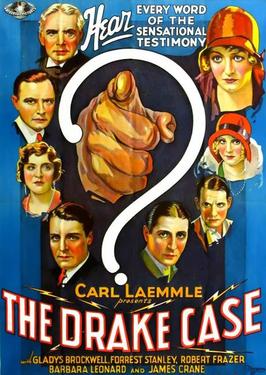
Very exciting picture of “The Drake Case” this afternoon. Mr. Carl Laemmle comes to the movies every day.
September 30, 1929
“Broadway” was the feature today, very good. Tonight the farewell dinner and gala evening in the social hall. Souvenirs for all.
October 1, 1929
Docked at 1 p.m. in Brooklyn.
Thanks for reading “Traveling with Grace,” a series where we’re sharing (and annotating) posts from the travel diaries of Grace Amelia Hecht, native Baltimorean, b. 1897 and d. 1955. In our next post we’ll jump forward a decade and pick up in 1940, when Grace heads to Mexico! As mentioned in my introductory post transcription errors sometimes occur and I’ve made my best guesses where possible, denoted by [brackets]. – Rachel Kassman, marketing manager
